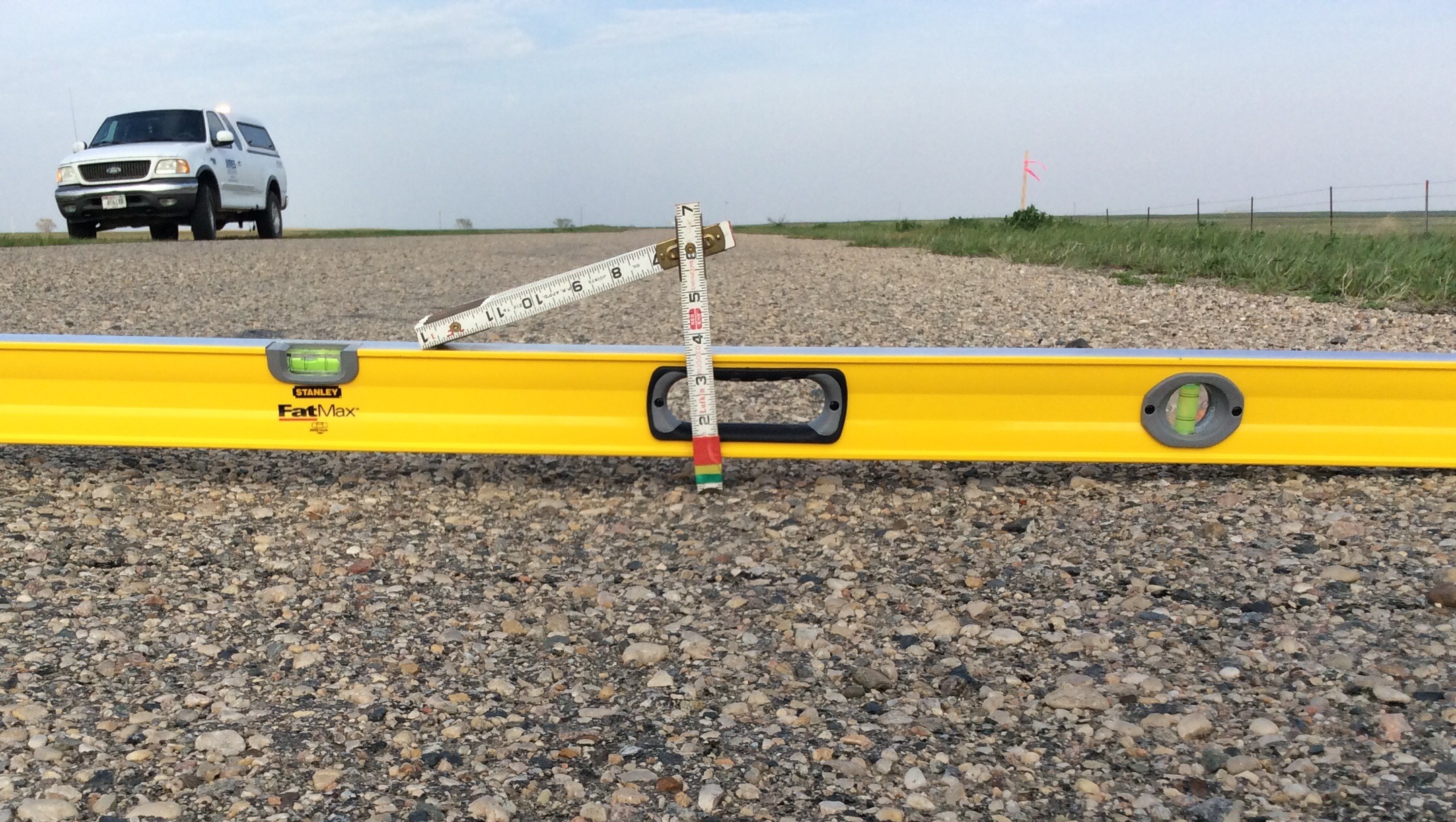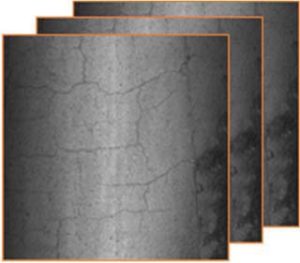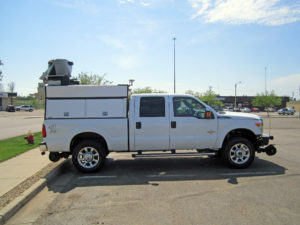PCI Objectively Rates Pavement Condition

 By Mark Petersen and Jason Krueger
By Mark Petersen and Jason Krueger
How much of an impact does your vehicle have on the roads? If you’re driving a passenger car, the impact is probably negligible. But what if your work vehicle is a loaded 18-wheeler? When the transport of heavy materials for a major project is unavoidable, involved parties are protected by the objective assessment of road conditions before and after the hauling  operations.
operations.
To assess pavement wear and tear, transportation experts use two common measurements of roadway condition: the Pavement Condition Index (PCI) and the Pavement Surface Evaluation and Rating (PASER).
What is the Pavement Condition Index?
- PCI measures the general condition of pavement through a visual examination of a representative portion of the roadway.
- The PCI assessment method focuses on pavement distress types.
- There are two central considerations when evaluating distress types:
- Severity: How bad is the defect? An example is the width of a crack.
- Extent: How much is there? Examples include the number or length of cracks.
- By measuring the severity and extent of specific types of pavement distresses, the pavement can be ranked on a numerical index from 0 to 100, where 100 is the best possible score.
| Pavement Distress Types | ||||
|---|---|---|---|---|
| Alligator Cracking | Patching and Utility Cut Patching | |||
| Bleeding | Polished Aggregate | |||
| Block Cracking | Potholes | |||
| Bumps and Sags | Railroad Crossing | |||
| Corrugation | Rutting | |||
| Depression | Shoveling | |||
| Edge Cracking | Slippage Cracking | |||
| Joint Reflection Cracking | Swell | |||
| Lane/Shoulder Drop-off | Weathering/Raveling | |||
| Long and Transverse Cracking | ||||

How Is PCI Measured?
- For smaller pavement systems the entire segment may be surveyed, but for larger projects a representative sample is evaluated, equating to 10% of each roadway segment.
- For each roadway segment, the density of specific pavement distress types is evaluated in terms of the percentage of the segment that is affected and the severity of the distress.
- The identified density value, determined above, is used to determine the amount that will be deducted from 100 to determine PCI.
- Multiple PCI samples are then aggregated for each unique road section.
What is Pavement Surface Evaluation and Rating?
- PASER measures pavement surface condition through visual inspection. Types of pavement distress are identified and assessed on a scale of 1 to 10.
- PASER does not require specific measurements for each distress type, instead focusing on the overall surface condition of the pavement segment.
- The benefit of the PASER method is its speed; there is no need to measure the severity and extent of specific pavement distress types.
| PASER Table of Distress Types | |
|---|---|
Surface Defects
|
Patches and Potholes |
Cracks
|
Surface Deformation
|
What a PASER Rating Means
A PASER rating provides two primary pieces of information:
- A general indication of the surface condition of the pavement segment being surveyed.
- A recommendation for the required maintenance or repair.
PCI versus PASER
By evaluating each pavement distress type in terms of severity and extent, PCI provides more data. PASER is faster, but PCI provides a more extensive evaluation of road conditions. That allows for a credible recommendation when determining the damage caused by a specific activity and the compensation required to make necessary repairs.
Training
Pavement Management Level 1 Training (PAVER system) through Colorado State University gives a greater understanding of PCI and PCI inspections. From understanding how to establish a pavement inventory to properly analyzing pavement condition, training makes the difference in effectively applying PCI.
Case Study: Evaluating Haul Roads
Using PCI, Ayres staff recently inventoried over 400 miles of paved roads that were to be used for a major hauling operation. High-resolution pavement imagery and mobile light detection and ranging (lidar) data were collected to document conditions before hauling began. The PCI inspection results will be the baseline against which post-construction conditions will be compared for each roadway segment.

Our team sampled 10% of each road to provide condition analysis and PCI scoring. Each sample area was about 25 feet wide (or the width of two lanes of roadway) by 100 feet long, amounting to over 2,000 individual areas inspected. The mobile capture vehicle was equipped with a mobile lidar unit and a downward-facing camera system. Over 385,000 pavement images were taken, allowing our team to detect and measure existing rutting along the roadways. Technicians conducted image and rutting analyses, and data was logged into a PCI computation database. For PCI defect types that could not be gathered with high confidence from the downward-facing camera, visual inspection was conducted, and data was manually entered.
We provided the client with an aggregated PCI score for each roadway segment for the entire pavement network. After construction the same data collection and processing methods can be used to determine the change in PCI for each roadway segment.
Mark Petersen is a transportation engineer. His primary responsibilities include project management, rural and urban state highway design, report preparation, utility coordination, and agency coordination. He also writes pavement type selection reports, environmental reports, and design study reports. Jason Krueger is manager of aerial mapping. Jason brings experience in mapping and GIS. He has worked both as a technician and as a project manager for a broad range of mapping and land information services. His specialties include lidar and photogrammetry project design, flight planning, and customized spatial data services.

Post a comment: